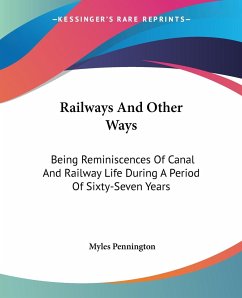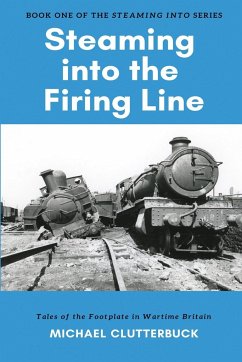
Steve Liptrot
Broschiertes Buch
What Railways Left Behind
Versandkostenfrei!
Versandfertig in über 4 Wochen

PAYBACK Punkte
9 °P sammeln!




A pictorial history of what railways have left behind in Britain and a selection of European countries.
Steve Liptrot is a railway enthusiast and photographer based in the Midlands.
Produktdetails
- Verlag: Amberley Publishing
- Seitenzahl: 96
- Erscheinungstermin: 15. Oktober 2025
- Englisch
- Abmessung: 233mm x 165mm x 10mm
- Gewicht: 310g
- ISBN-13: 9781398125155
- ISBN-10: 1398125156
- Artikelnr.: 71850201
Herstellerkennzeichnung
Libri GmbH
Europaallee 1
36244 Bad Hersfeld
gpsr@libri.de
Für dieses Produkt wurde noch keine Bewertung abgegeben. Wir würden uns sehr freuen, wenn du die erste Bewertung schreibst!
Eine Bewertung schreiben
Eine Bewertung schreiben
Andere Kunden interessierten sich für




![Canada (Halifax, &c. Railway), Railways (British North America) [microform]: Copy of Official Communications Between the Secretary of State for the Co Cover Canada (Halifax, &c. Railway), Railways (British North America) [microform]: Copy of Official Communications Between the Secretary of State for the Co](https://bilder.buecher.de/produkte/65/65619/65619737n.jpg)

![The Passenger Department of Canadian Steam Railways [microform]: an Address Given Before the Canadian Railway Club, Montreal Cover The Passenger Department of Canadian Steam Railways [microform]: an Address Given Before the Canadian Railway Club, Montreal](https://bilder.buecher.de/produkte/65/65588/65588058n.jpg)

![Special Track Work for Electric Street Railways [microform]: Especially Referring to the Montreal and Toronto Systems Cover Special Track Work for Electric Street Railways [microform]: Especially Referring to the Montreal and Toronto Systems](https://bilder.buecher.de/produkte/65/65600/65600500n.jpg)


